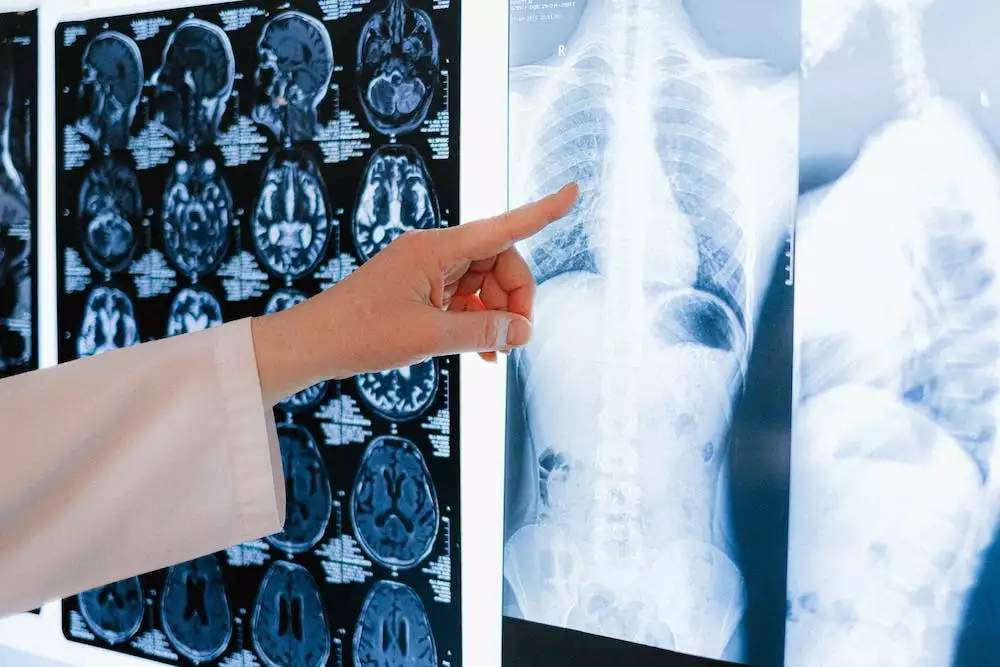The bronchial tubes: a key component of the respiratory system for health and well-being

The bronchi or trachea are a vital part of our respiratory system. They are smooth tubes that connect the throat and trachea and allow air to enter the lungs. The bronchial tubes have a very important function in breathing and are one of the main routes through which air flows into our body. In this article, we will discuss more about the structure of the bronchi, their functions and the diseases related to them.
Anatomy of the bronchi
The bronchi are part of the respiratory system and play a key role in bringing air to the lungs. Anatomically, the bronchi are tubular in shape, which are further divided into smaller and smaller branches. The total number of bronchi in the human lungs is estimated to be several hundred thousand. The walls of the bronchi are made up of muscle and elastic connective tissue, which allows them to change their diameter and thus control the flow of air through the airways. The following branches are called bronchioles, and these branch further into thin hair-like alveolar ducts that lead to the alveoli, where oxygen and carbon dioxide diffuse between the air and the vasculature. Proper functioning of the bronchial tubes is essential for maintaining healthy lungs and the overall health of the individual.
Functions of the bronchi in the respiratory system
The bronchial tubes are an important part of the respiratory system that allows air to be carried to the lungs. The bronchi are divided into smaller and smaller branches until they finally divide into a series of small cavities called the lung chambers. These chutes are then filled with air, forming a space for the exchange of oxygen and carbon dioxide between the blood and the surrounding environment. The function of the bronchial tubes is essential for the proper functioning of respiration, which is essential for sustaining the life of the body.
Diseases of the bronchi
Bronchial disease is a very common problem in the population today. The bronchi are the parts of the respiratory system that connect the trachea and lung tissue. When bronchi are inflamed or constricted, people may have impaired airflow when they breathe in and out.
The most common diseases that involve the bronchial tubes include asthma and chronic obstructive pulmonary disease (COPD). Asthma is characterized by periodic attacks of shortness of breath, coughing and wheezing. COPD causes a progressive deterioration in lung function.
Recently, allergic rhinitis with skin manifestations - atopic eczema - has also become widespread. Although these allergies target the surface of the body, the bronchial tubes can also be affected.
Prevention of bronchial disease is based on good general health and reducing risk factors. Be mindful of a good lifestyle, avoid smoking and unhealthy work environments. In case of bronchial disease, contact your doctor for help with treatment and prevention of further complications.
1. Asthma
.Asthma is a chronic bronchial disease that affects millions of people worldwide. With asthma, the bronchial tubes become narrowed and inflamed, which can lead to repeated attacks of shortness of breath and coughing. These attacks can be triggered by various factors such as allergies, physical exertion or inhalation of irritants. Treatment for asthma involves taking medication to relieve bronchial inflammation and dilating the bronchial tubes to reduce the risk of attacks. It is important to take your medication as prescribed and avoid factors that can trigger asthma to worsen.
2. Chronic obstructive pulmonary disease (COPD/COPD)
.2. Chronic obstructive pulmonary disease (COPD) is a serious respiratory disease that affects the bronchi and alveoli in the lungs. This disease occurs in people who have smoked tobacco or been exposed to harmful substances. COPD includes emphysema and chronic bronchitis, which are two frequently occurring forms of the disease. These conditions cause narrowing of the bronchial tubes and disruption of normal breathing. The painful symptoms of COPD can be very limiting to a patient's daily life and can even lead to complete incapacity to work or even death. It is therefore essential to take this disease very seriously and seek medical care as soon as possible in order to treat the symptoms and reduce their impact on the patient's life.
3. Bronchitis
Bronchitis is one of the most common bronchial diseases. It is an inflammation of the lining of the bronchial tubes that can be either acute or chronic. Acute bronchitis is usually manifested by coughing, difficulty in breathing and fever. Chronic bronchitis can be associated with prolonged smoking or air pollution and its symptoms include regular coughing with expectoration of mucus, shortness of breath and fatigue. It is important to treat bronchitis early and follow the doctor's recommendations to avoid permanent damage to the bronchial tubes.
Prevention and bronchial health care
Prevention and bronchial health care are very important to maintain the overall health of the respiratory system. The bronchial tubes are part of the respiratory system and are crucial for the supply of oxygen to the lungs and subsequently to the whole body. In order to prevent potential bronchial problems, it is essential to follow a preventive approach that includes avoiding smoke especially cigarette smoke, regular physical activity, getting enough sleep and eating a balanced diet rich in antioxidants. Care of the bronchial tubes should also include regular exposure to fresh air, maintaining optimal humidity in the room by using a humidifier or vaporizer, and avoiding allergens and dust particles. It is important to seek medical attention as soon as possible if any breathing difficulties or other skin problems associated with the respiratory system occur.
1. Healthy lifestyle
Healthy living is key to maintaining the health of the entire body, including the respiratory system. Regular physical activity strengthens chest muscles, and running in the fresh air can help clear the bronchial tubes of accumulated mucus. It is also important to follow a healthy diet rich in vitamins and minerals so that the body can effectively defend itself against infections and respiratory diseases. In addition, avoiding smoking and maintaining good hygiene will help minimize the risk of bronchitis.
2. Protection from air pollution
.The bronchial tubes are one of the most important parts of our respiratory system. However, with the increasing amount of pollution in the air, it is becoming increasingly difficult to keep them in good condition and protect them from the negative effects of harmful substances. It is therefore very important to take measures to reduce emissions, such as regulating industrial production, promoting alternative energy sources and developing public transport. With proper air protection, the bronchial tubes can be protected and preserved for long-term health and well-being.
3. Regular physical activity and exercise
Regular physical activity and exercise are key to maintaining the health of the bronchial tubes, an important part of the respiratory system. Exercise can help improve circulation and breathing, which can reduce the risk of respiratory problems. In addition, physical activity also promotes the production of antioxidants, which help fight free radicals and inflammation in the tissues of the bronchial tubes. It is therefore recommended to exercise regularly and be physically active to maintain optimal bronchial function and overall respiratory health.
Diagnosis and treatment of bronchial diseases
Diagnosis and treatment of bronchial disease are key factors in the prevention and treatment of respiratory disorders. Various methods such as X-ray, spirometry, bronchoscopy and other tests are used for diagnosis. If a specific diagnosis is made, then treatment is applied with the use of the right medications such as inhalers and corticosteroids that help to clear the bronchial passages. In addition, there are also non-invasive methods such as physiotherapy or acupuncture. It is important to diagnose any bronchial problems early and follow the prescribed therapy to achieve a successful outcome.
1. Investigation methods
One of the most important investigative methods used in connection with bronchial problems is the chest X-ray. With this diagnostic procedure, doctors are able to get a detailed picture of the condition of the lungs, cervical spine and other organs in the area. Another classic procedure for monitoring the condition of the bronchial tubes is bronchoscopy, during which the doctor uses a thin tube to perform an internal examination of the respiratory system and, if the disease is potentially confirmed, may also perform a tissue biopsy. Methods such as CT or MRI are also a modern trend in bronchial diagnostics, as they can capture details to a much greater extent than conventional methods.
2. Treatment procedures
Treatment of bronchitis involves a variety of procedures aimed at relaxing the airways and improving breathing. The main treatments include the use of bronchodilator drugs, which help to dilate the bronchial tubes and increase airflow. In addition, corticosteroids are used to reduce inflammation in the airways and help relieve symptoms of asthma or chronic obstructive pulmonary disease. In addition, patients with bronchial problems may be advised to do physiotherapy exercises that promote relaxation and clear the airways, and to adopt a lifestyle adapted to their disease - for example, to reduce contact with allergens or to reduce stressful situations. The overall success of treatment depends on the right combination of these approaches and an individual approach to the patient.
3. Medicines for bronchial treatment
Medications for bronchial treatment are used for diseases that affect this part of the respiratory system. Among the most commonly used are bronchodilators, which help relax the muscle tissue in the bronchial tubes and improve airflow. Other types of medication include corticosteroids, which reduce inflammation and swelling in the bronchial tubes, and anticholinergics, which block the effects of acetylcholine and help relax muscle tissue. The right combination of these medications can improve breathing function and reduce the frequency of symptoms such as coughing, shortness of breath and wheezing. It is important to always follow your doctor's recommendations on the correct use of these medications to avoid potential complications.
Overall, the bronchial tubes play a non-negligible role in the respiratory system, allowing air to flow in and out of the lungs. It is important to take care of their health and prevent various diseases associated with them, such as asthma and chronic obstructive pulmonary disease. If you experience any problems or symptoms of difficulty breathing, it is essential to seek medical attention. Early diagnosis and treatment can prevent serious complications and save lives.
Resources that provide information about the bronchial tubes are very important to our understanding and care of the respiratory system. The main sources include professional literature, research studies, medical publications and health information portals. There are also many good resources on the internet, such as videos explaining the function of the bronchial tubes and websites with tips on preventing respiratory diseases. We should also remember to visit expert doctors and specialists who can provide us with the most up-to-date and relevant information on this topic.
Published: 22. 08. 2023 / Updated: 24. 08. 2023
Category: Health



